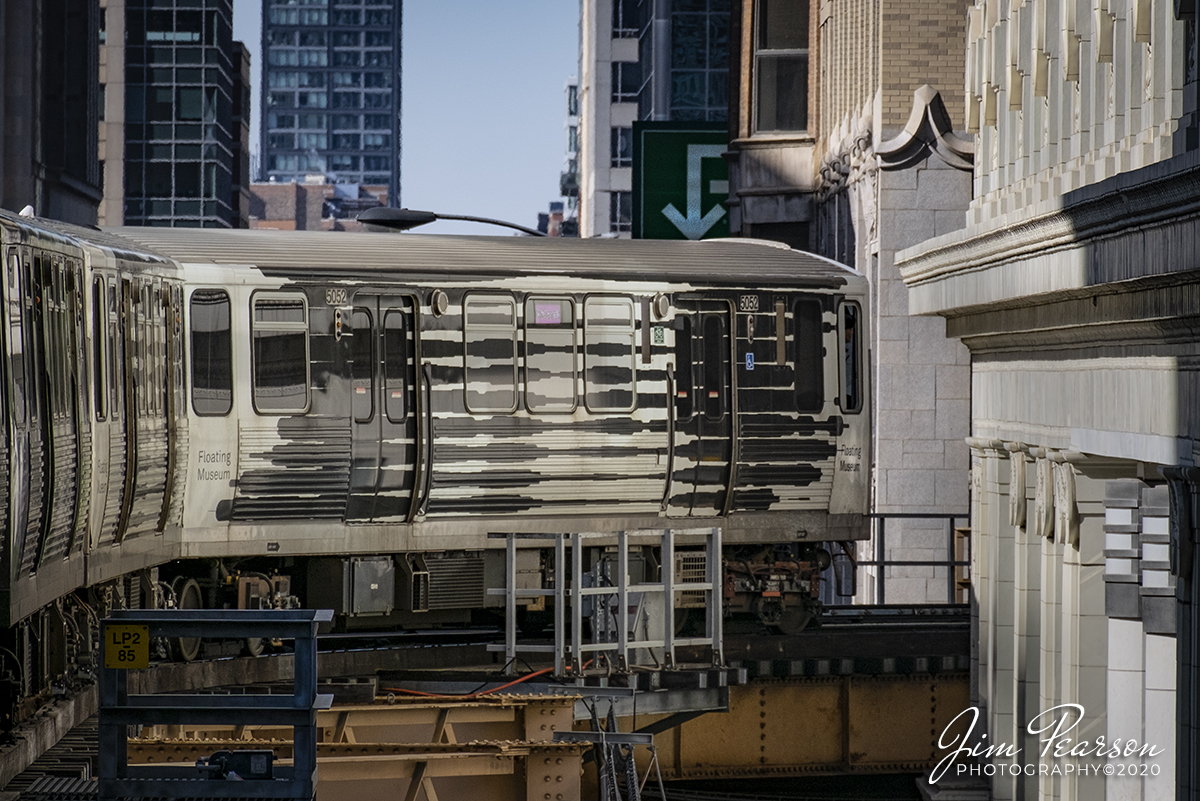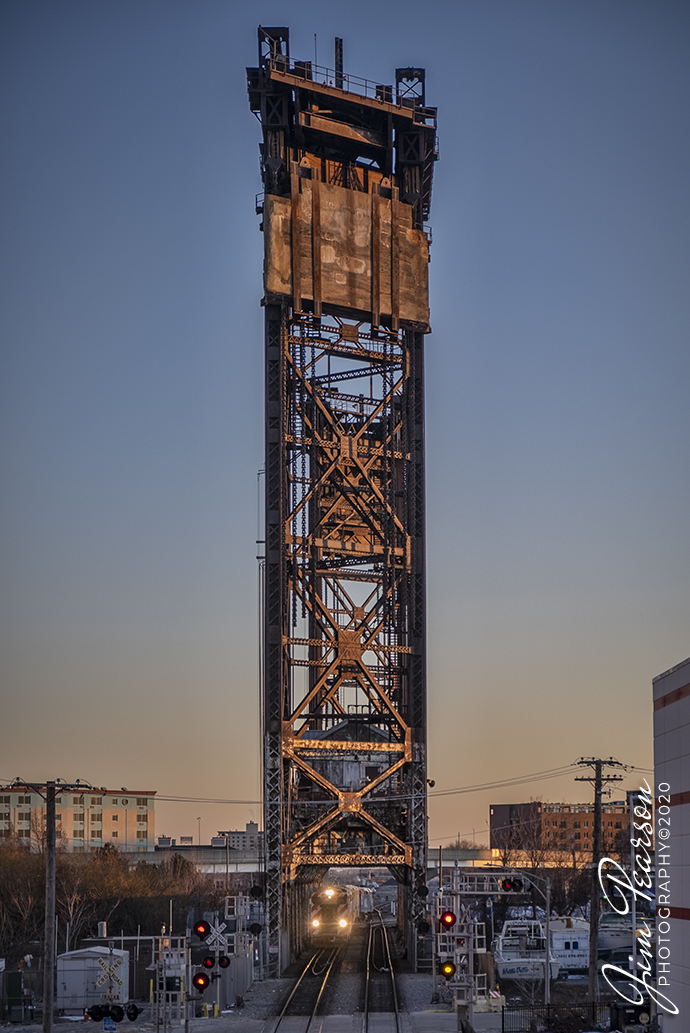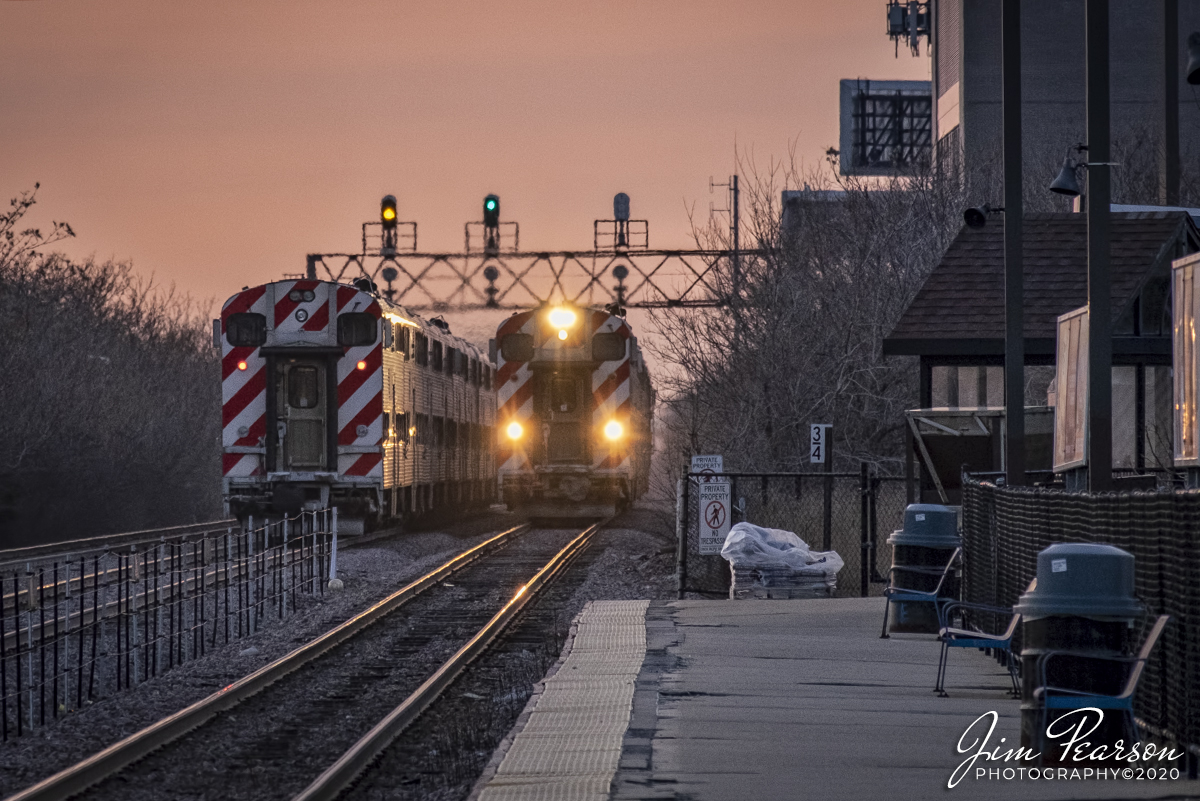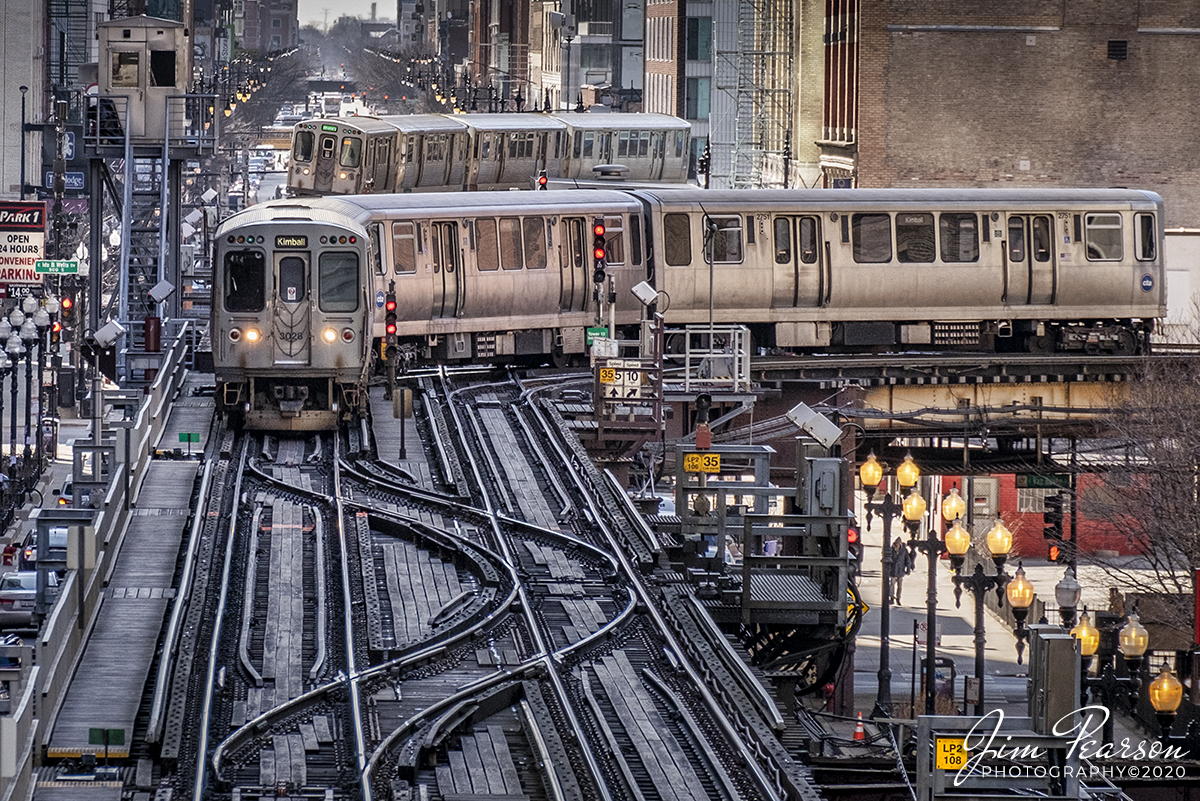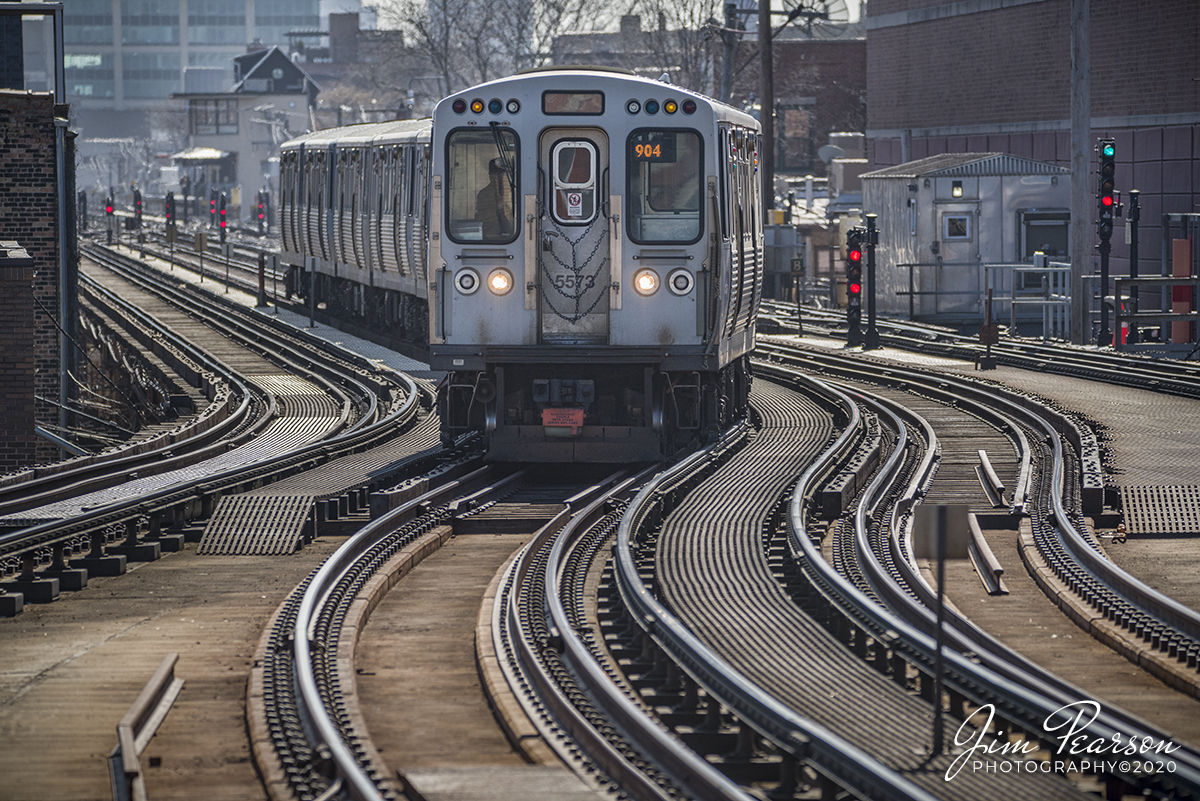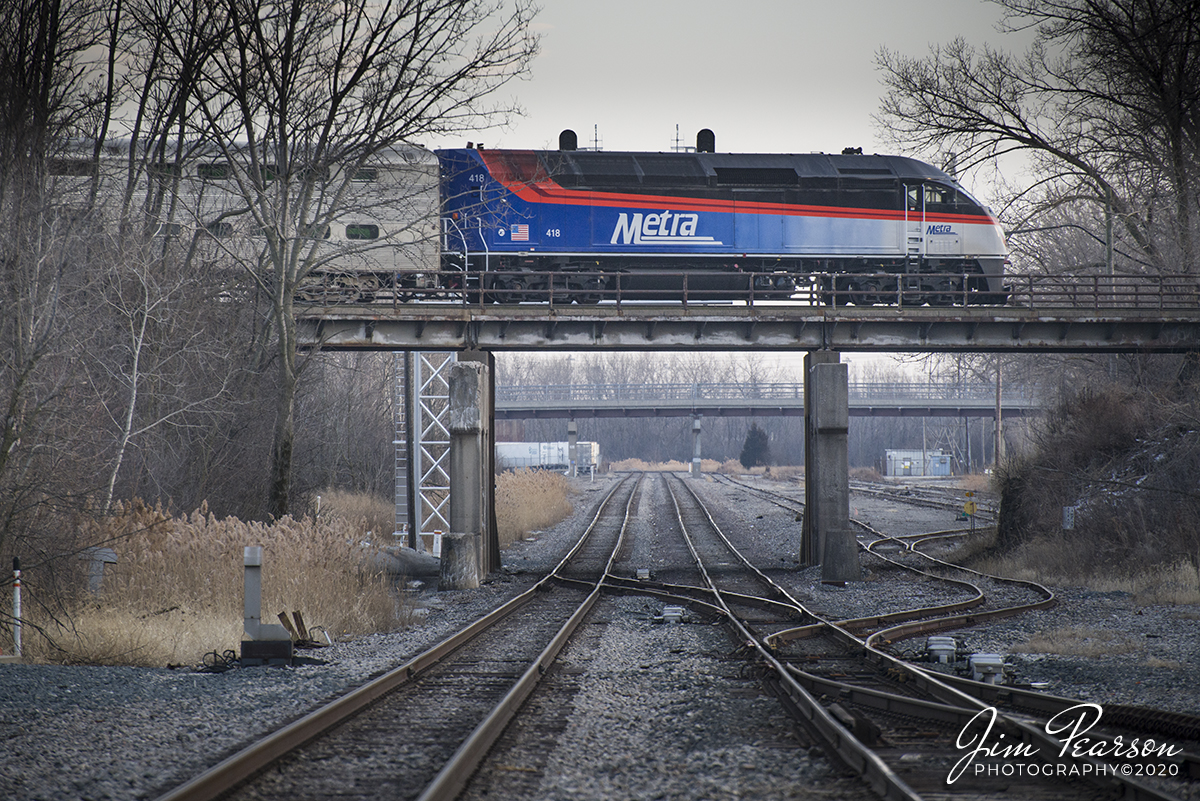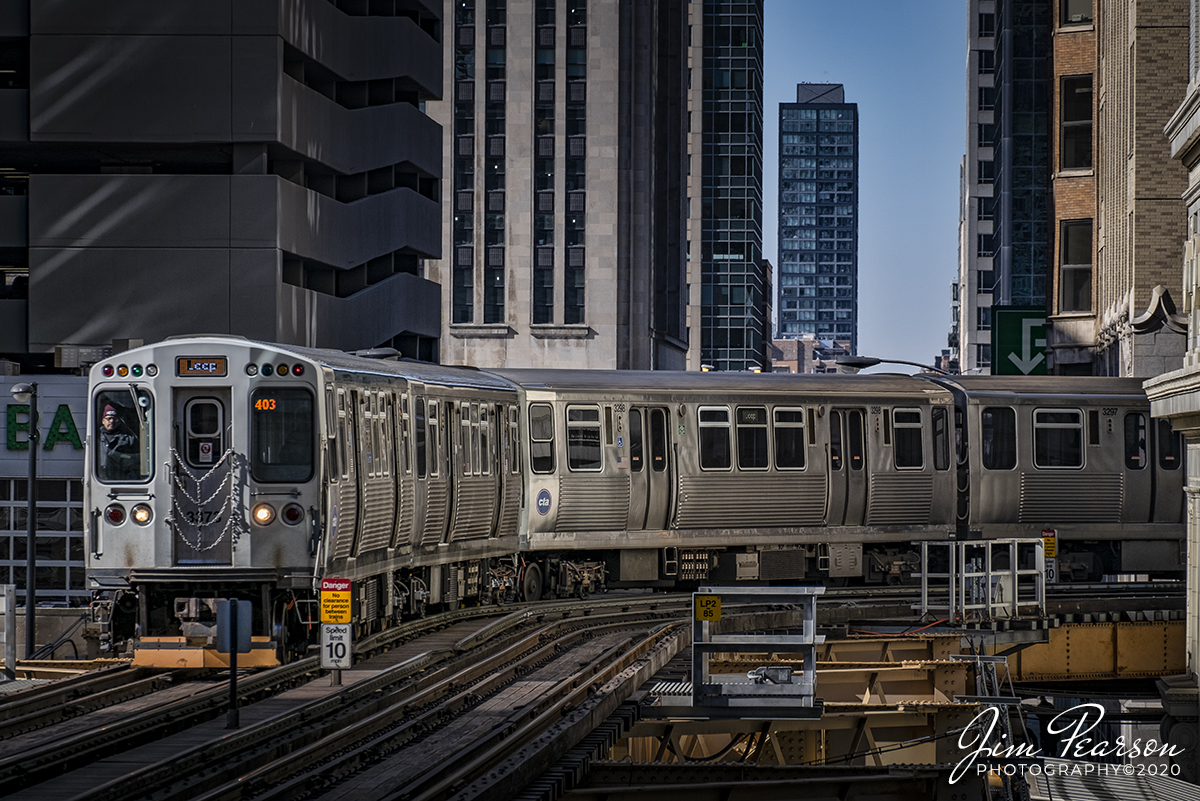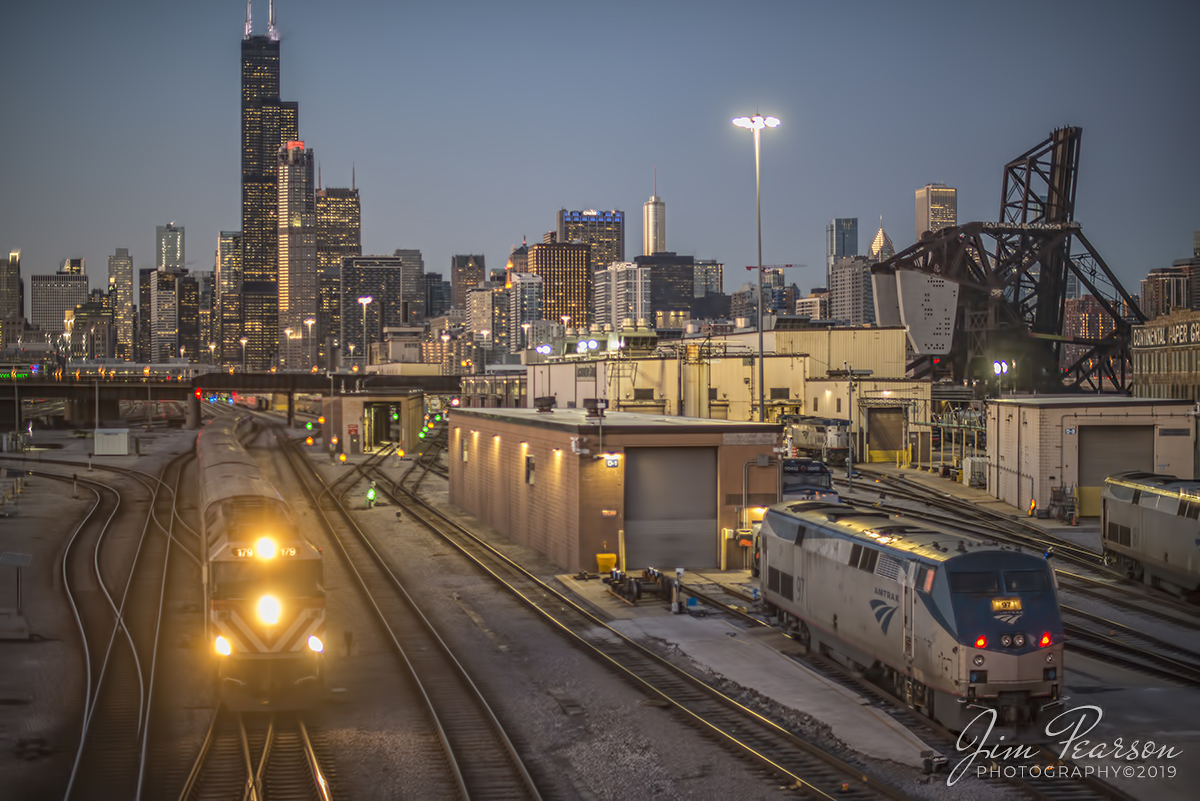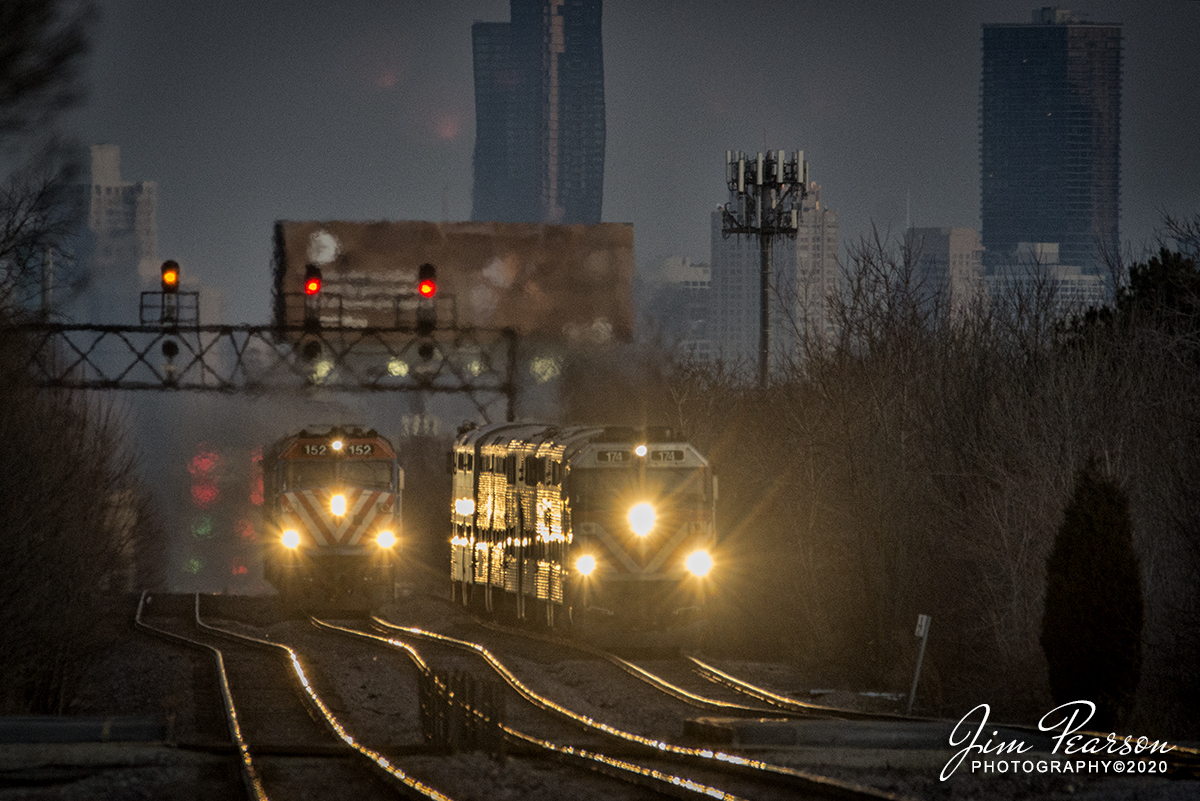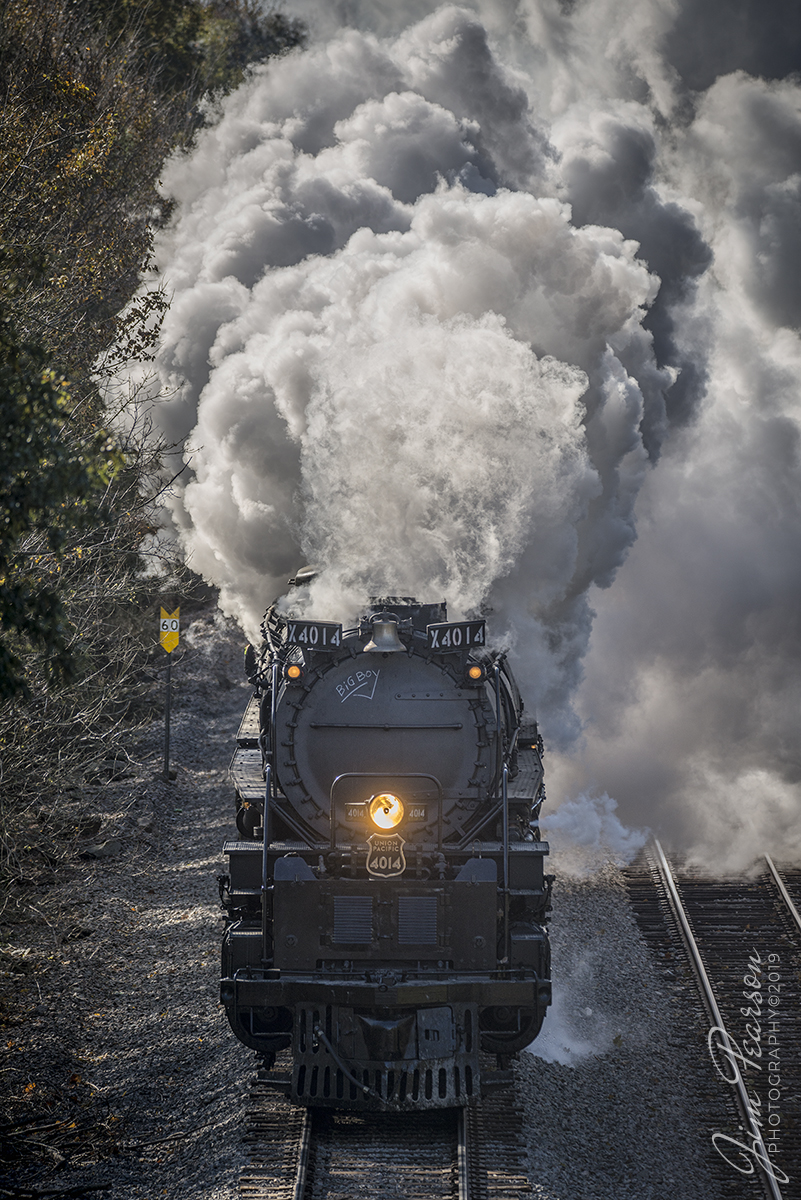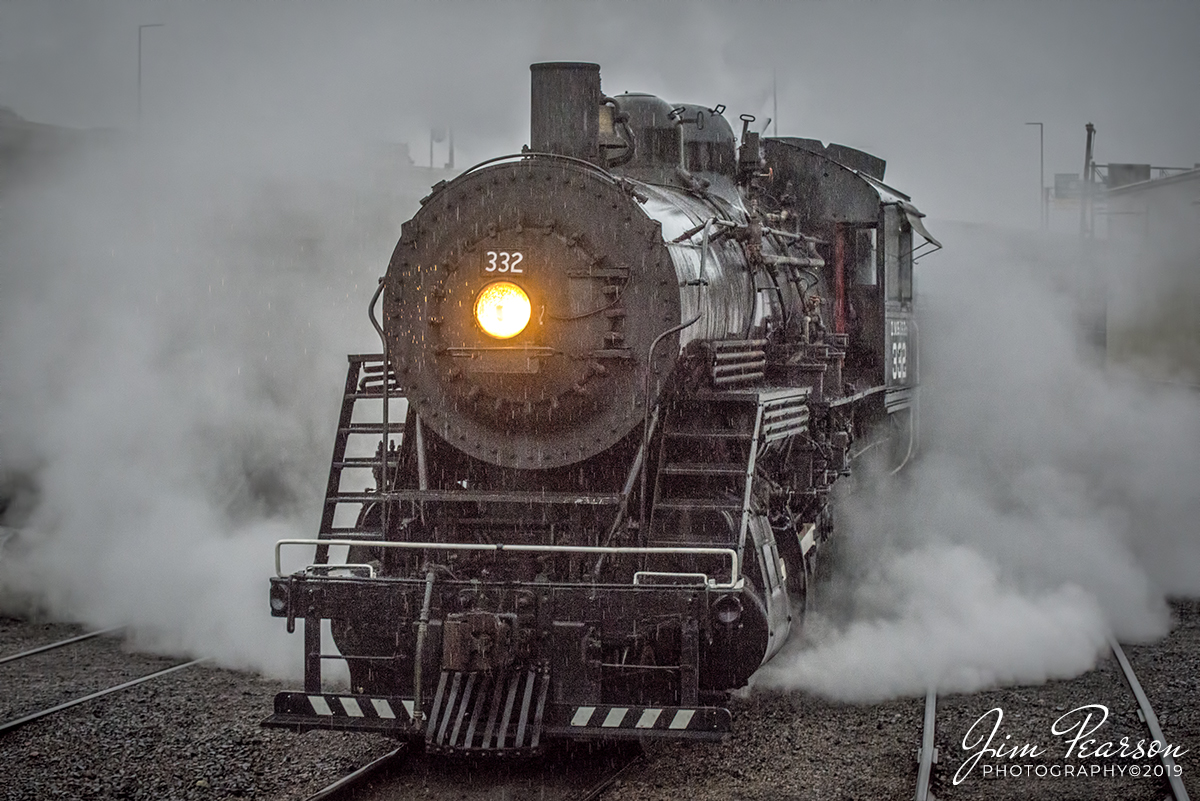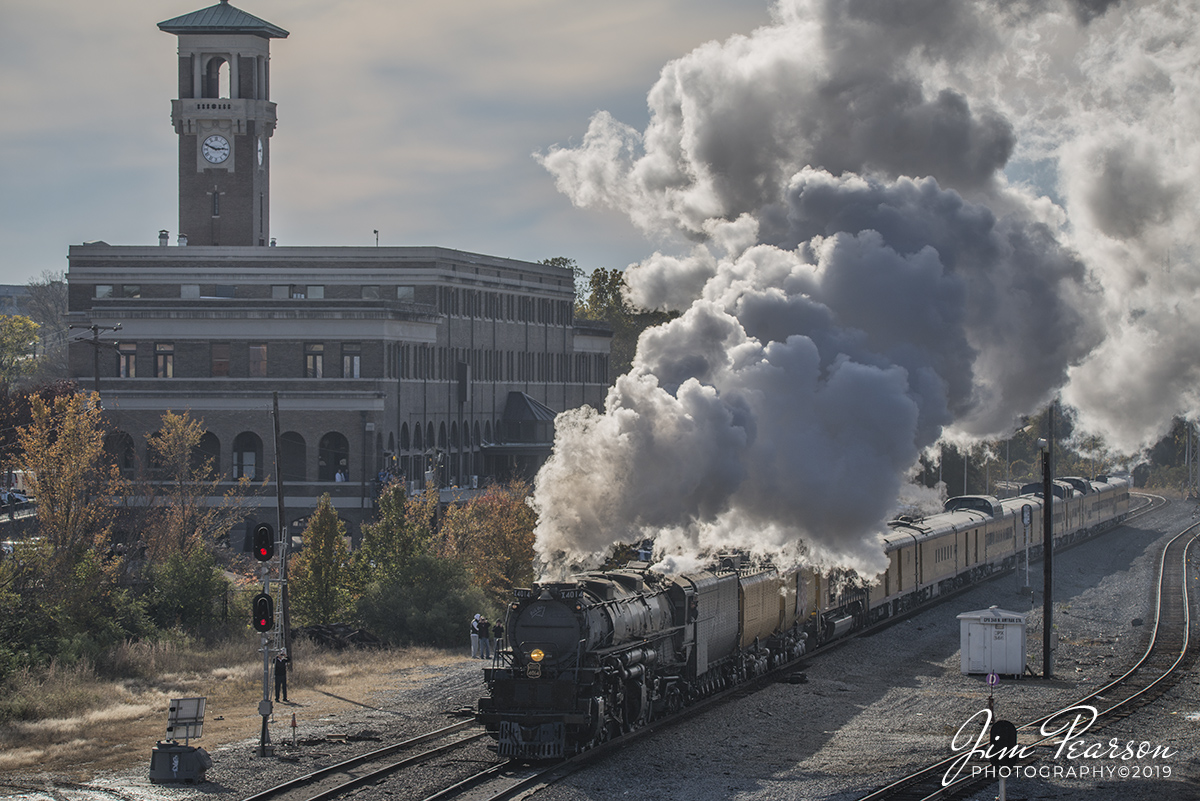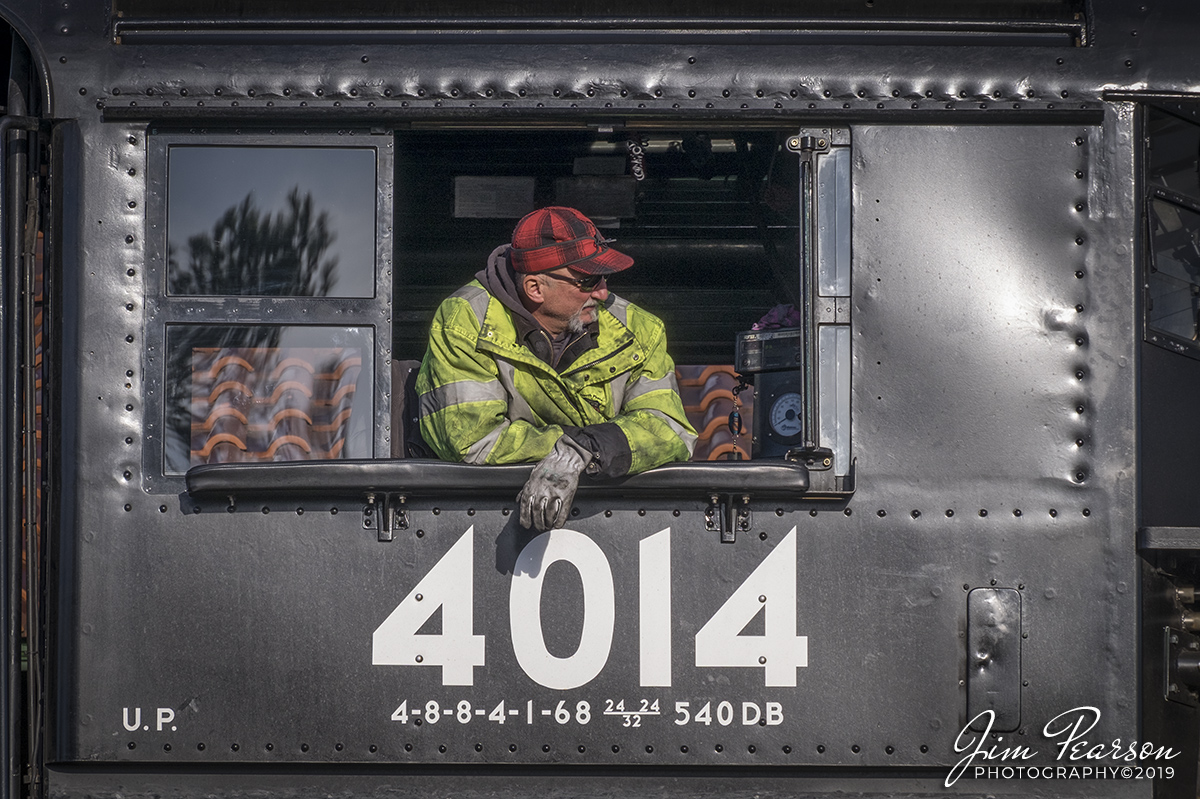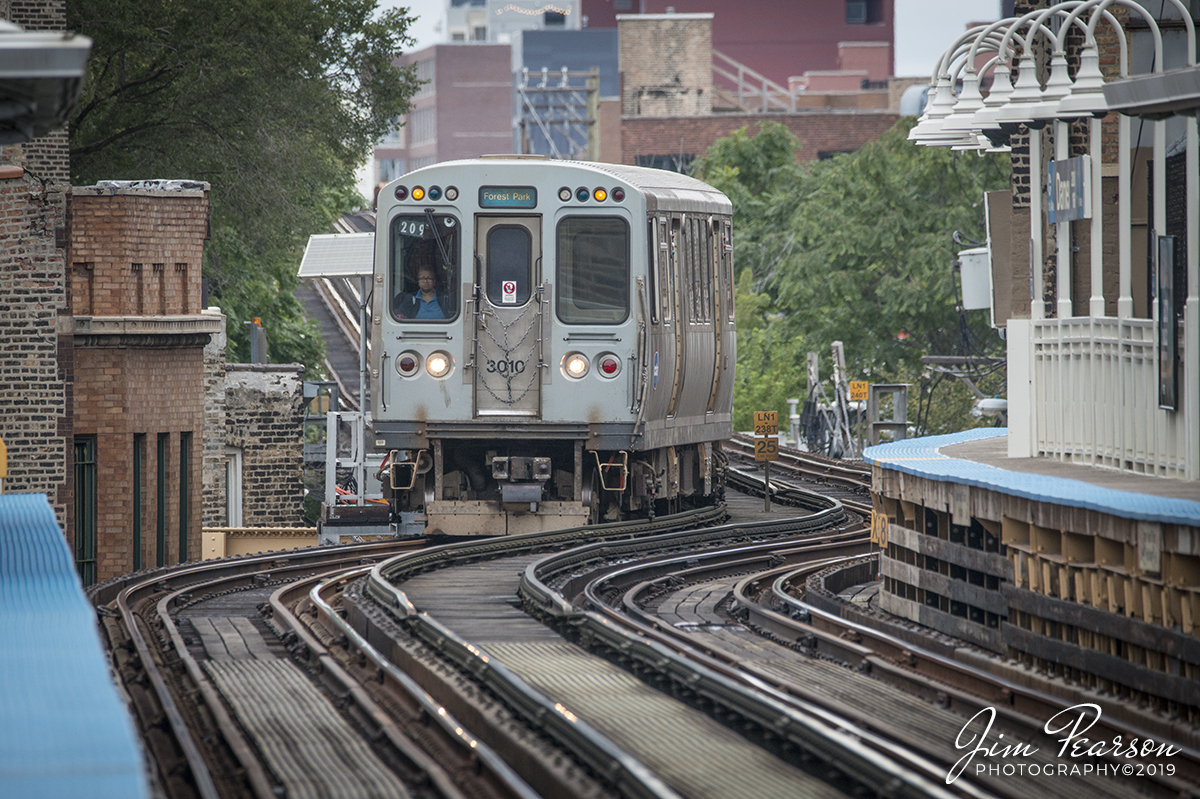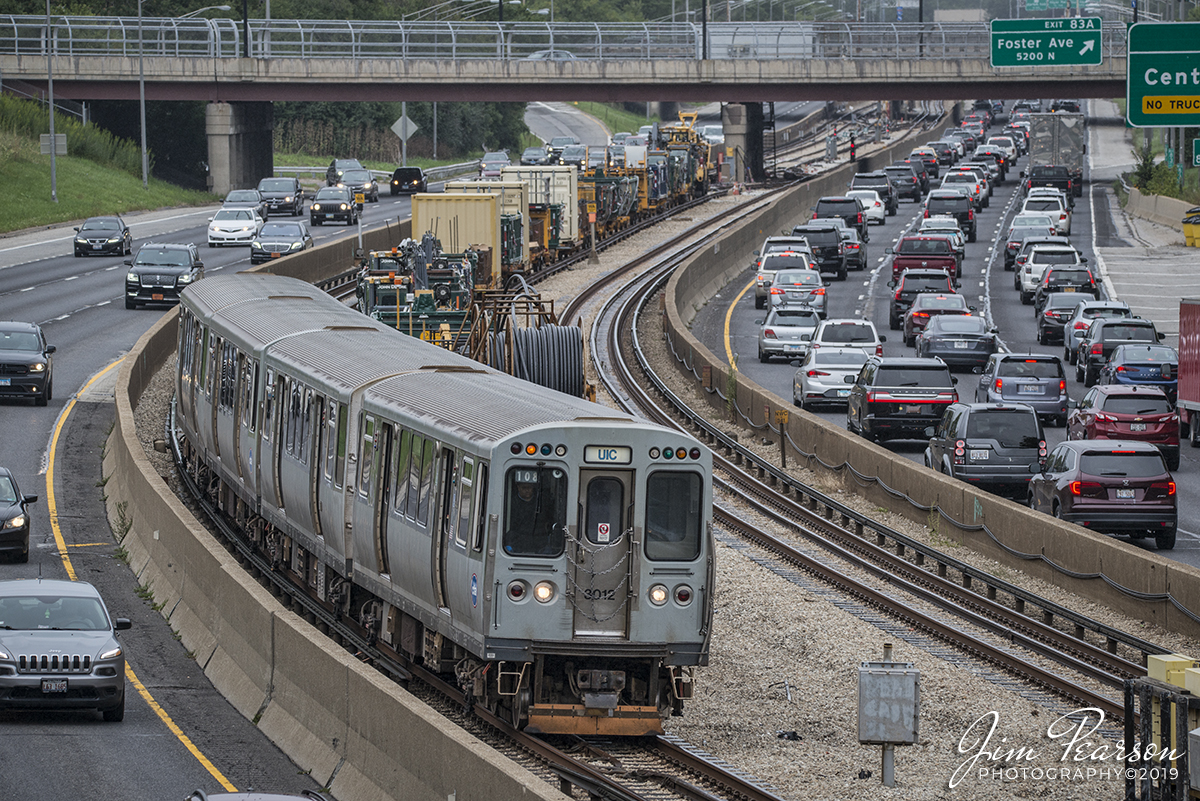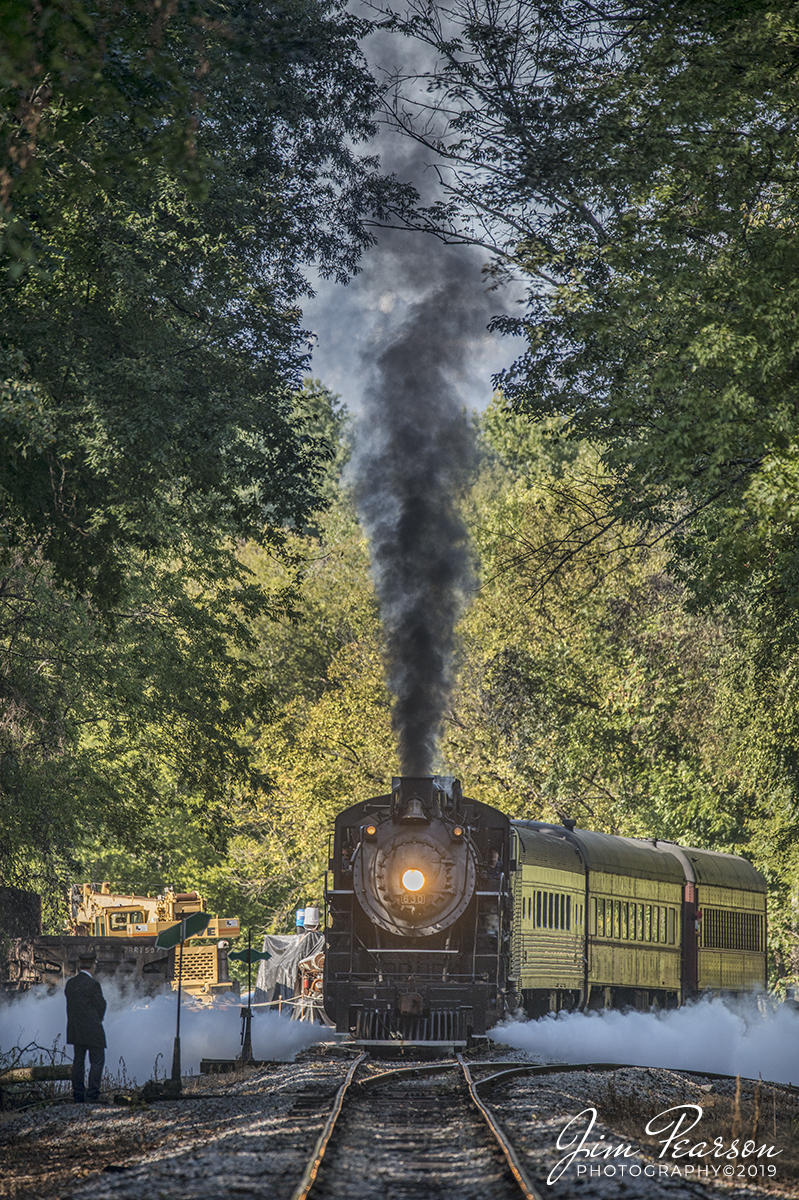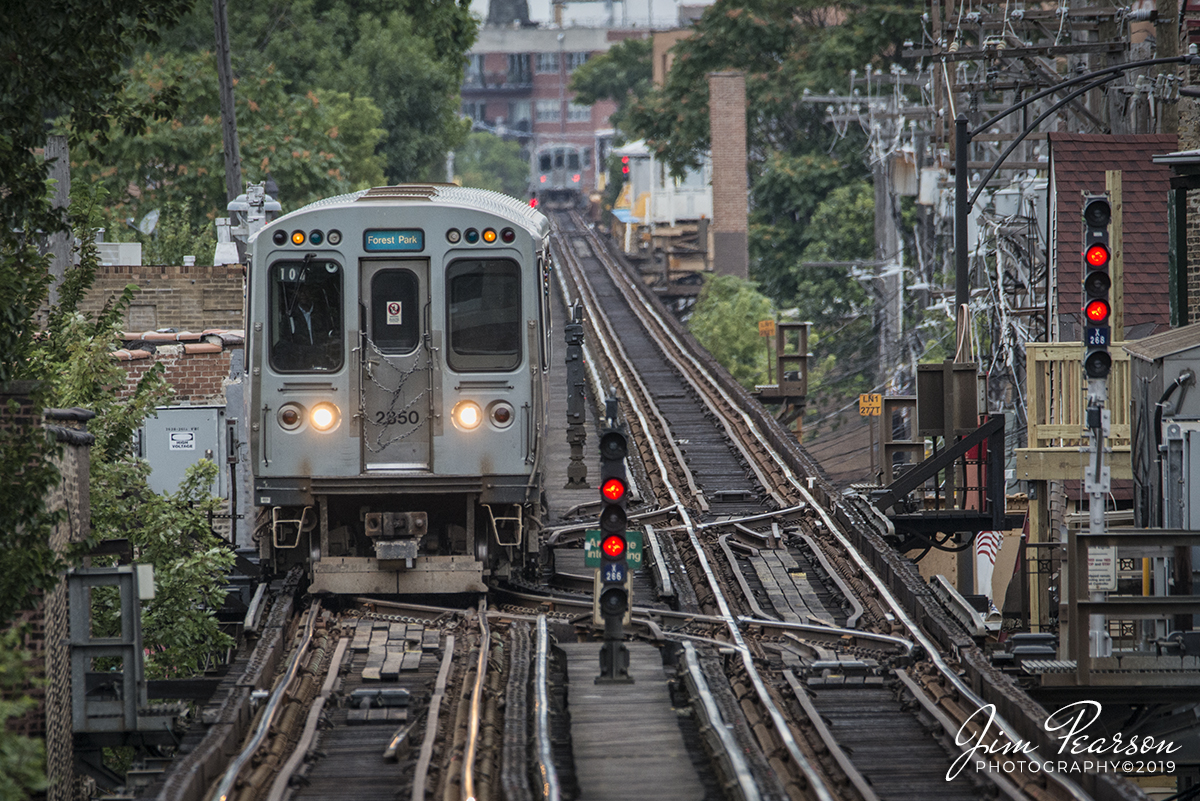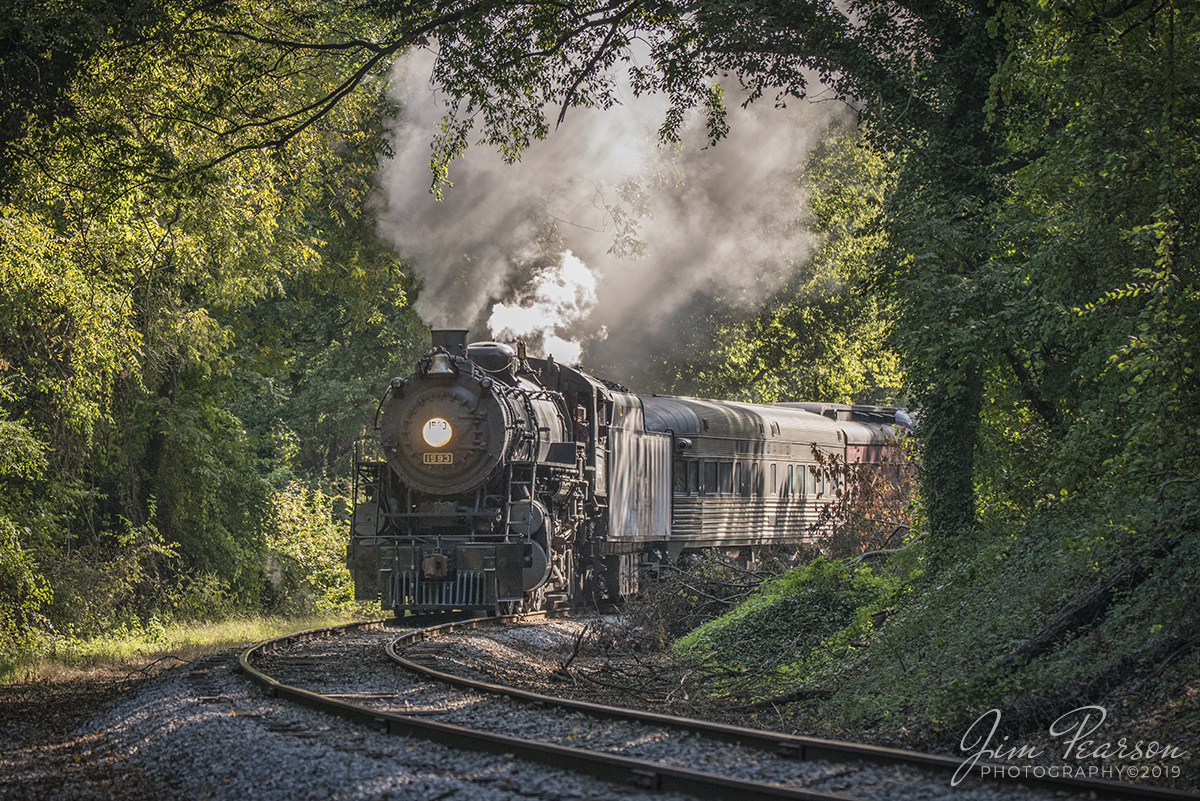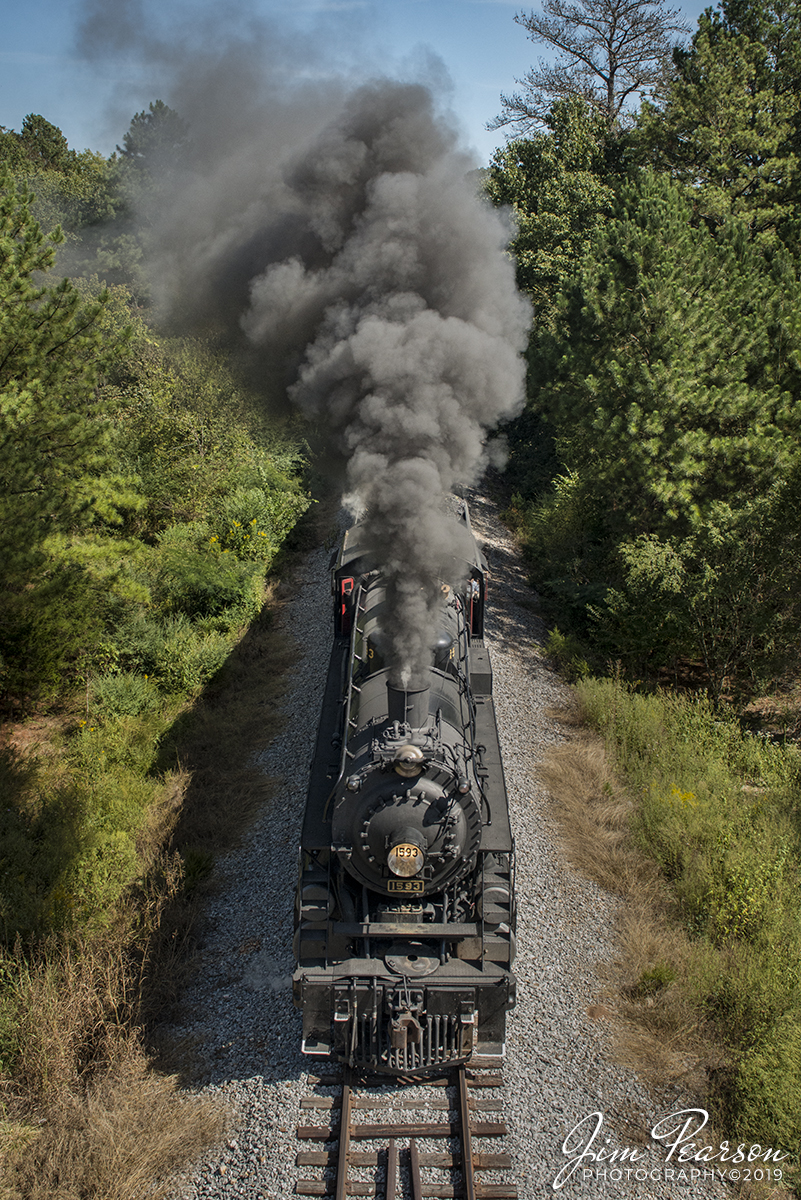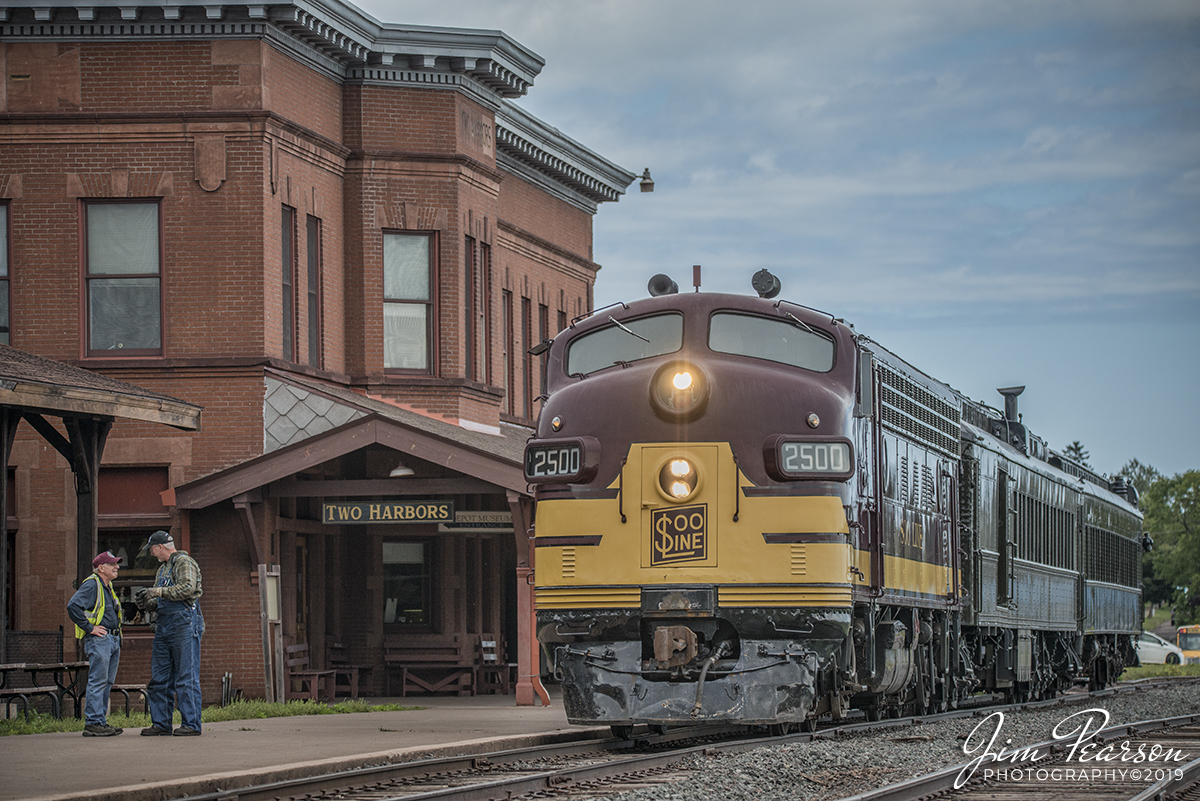February 20, 2020 – The head car on a Pink Line set “Floating Museum” #5052, makes its way through the downtown loop on the “L” in downtown Chicago, Illinois.
According to the Floating Museum Website: The Floating Museum partnered with the Chicago Transit Authority and Chicago Park District to transform the Green Line into a moving cultural destination, activating several parks along the south and west ends of the line between July 2019 – September 2019.
Cultural Transit Assembly serves both to celebrate the cultural work being done in these neighborhoods as well as to strengthen the ties between these spaces. This project is also an opportunity for Floating Museum to continue to foster collaborations between local, municipal, and community based organizations with larger city institutions.
Floating Museum developed site-specific exhibitions that highlighted local histories with complimentary public programs including live musical performances, panel discussions, neighborhood walking tours, film screenings, and more.
Cultural Transit Assembly happened up and down the CTA Green Line and included Founders which is a mobile monument and collaboration between Floating Museum, Chris Pappan and Monica Rickert-Bolter.
For more information visit: https://floatingmuseum.org/Transit
A northbound Metra train crosses…
February 20, 2020 – A northbound Metra train crosses the 21st Street Lift Bridge over the old Pennsylvania RR Drawbridge 463, as it heads north to Union Station in downtown Chicago at dusk. This lift bridge is one of only a few still in operation in Chicago, Illinois.
According to Patrick McBriarty, a former business person and consultant who over a decade ago discovered a new focus and fascinati… See More
An outbound and inbound Metra train…
February 19, 2020 – An outbound and inbound Metra train pass each other at the Jefferson Park Metra Station during the evening rush hour to and from downtown Chicago, Illinois as the golden light of the day begins to fade from the sky.
Chicago Transit Authority Brown Line and…
February 20, 2020 – Chicago Transit Authority Brown Line and Green Line trains round curves at Tower 12 as they make their way around the downtown Chicago, Illinois “L”. The first “L” (elevated) train (then Chicago and South Side Rapid Transit Railroad) was built in 1892, and its inaugural journey took place on June 6, spanning 3.6 miles in 14 minutes.
Chicago Transit Authority train 904…
February 21, 2020 – Chicago Transit Authority train 904 heads toward the Howard Street Station in Chicago, Illinois on a sunny cold day.
Metra engine 418 crosses over…
February 22, 2020 – Metra engine 418 crosses over the CSX Elsdon Subdivision as it heads along the Metra Joliet Sub District at Blue Island, Illinois. I spent a good part of the morning and afternoon here at Blue Island today and ever caught a single train on the Elsdon Subdivision, but some days are like that!
The engineer on Chicago Transit Authority…
February 20, 2020 – The engineer on Chicago Transit Authority (CTA) Loop Train 403 keeps a watchful eye on the track ahead as he navigates his train around a curve as he makes his seemingly never ending loop through the canyons of downtown Chicago, Illinois.
Metra 179 pulls train #919 southbound…
February 20, 2020 – Metra 179 pulls train #919 southbound commuter train out of downtown Chicago, Illinois past the Amtrak facility as it approaches the 18th street overpass, as dusk falls over the city, on its way to Joliet, Illinois on the Metra Heritage Corridor.
A Metra Express train passes another Metra local…
February 20, 2020 – A Metra Express train passes another Metra local as they approach the Gladstone Park station on the UP-NW Line as they head northwest out of Chicago, Illinois at dusk.
Union Pacific’s “Big Boy” 4014 puts out a huge plume of steam in the cold November air as it departs Hope, AR
November 12, 2019 – Union Pacific’s “Big Boy” 4014 puts out a huge plume of steam in the cold November air as it departs Hope, Arkansas and heads north on Union Pacific’s Little Rock Subdivision on its way to Prescott, AR where it tied down for the night.
According to Wikipedia: The Union Pacific Big Boy is a type of simple articulated 4-8-8-4 steam locomotive manufactured by the American Locomotive Company between 1941 and 1944 and operated by the Union Pacific Railroad in revenue service until 1959.
The 25 Big Boy locomotives were built to haul freight over the Wasatch mountains between Ogden, Utah, and Green River, Wyoming. In the late 1940s, they were reassigned to Cheyenne, Wyoming, where they hauled freight over Sherman Hill to Laramie, Wyoming. They were the only locomotives to use a 4-8-8-4 wheel arrangement: four-wheel leading truck for stability entering curves, two sets of eight driving wheels and a four-wheel trailing truck to support the large firebox.
Eight Big Boys survive, most on static display at museums across the country. This one, No. 4014, was re-acquired by Union Pacific and restored to operating condition in 2019, regaining the title as the largest and most powerful operating steam locomotive in the world.
Duluth, Missabe & Iron Range 332 at Duluth, Minnesota
September 5, 2019 – The Duluth, Missabe & Iron Range 332 steam locomotive, at Lake Superior Railroad Museum, prepares for a day long photo charter from Duluth, Minnesota to Two Harbors, Minnesota along the North Shore Line, in the early morning rain.
Union Pacific 4014 Big Boy pulls it’s train north out of Union Station at Little Rock, Arkansas
November 13, 2019 – Union Pacific 4014 Big Boy pulls it’s train north out of Union Station at Little Rock, Arkansas on a cold fall afternoon.
Union Pacific billed this move as The Great Race Across the Southwest as the train is making a circle around the southwest over a six week or so period hitting Arkansas, Arizona, California, Colorado, Kansas, Missouri, Nevada, New Mexico, Oklahoma, Texas, Utah and Wyoming.
According to Wikipedia: Little Rock Union Station, also known as Mopac Station, is a train station in Little Rock, Arkansas, United States served by Amtrak, the national railroad passenger system.
The present Little Rock station opened August 1, 1921, having been constructed by the Missouri Pacific Railroad after a fire destroyed the prior station on April 7, 1920. The structure used existing foundations, some exterior walls and the clock tower of the previous station, which had survived the fire. The station is listed on the National Register of Historic Places as “Mopac Station”.
Although known as Union Station, this particular structure was used by only a single railroad, Missouri Pacific. Prior structures on this site were served by two additional railroads, Memphis & Little Rock (1874–1893) and St. Louis Southwestern Railroad (known as the ‘Cotton Belt’). (ca. 1892–1910). The present (1921) structure was predated by a large wooden structure erected in 1874, and a brick station that opened in 1909 and burned in 1920.
The main entrance to Union Station was located on the Markham Street level, and waiting rooms, ticket office and a restaurant were located on this level. The upper two floors housed the railroad’s train dispatchers and offices of the freight and passenger departments, American Refrigerator Transit, and the Pullman Company, which staffed the sleeping and dining cars of passenger trains. The basement (track level) held extensive mail and Railway Express Agency facilities, a baggage room, and a small dining car commissary. Passenger access to the tracks was via an open air midway extending from the north side of the building, with stairways and three umbrella sheds extending in each direction at track level. This midway structure was original to the 1908 station, having survived the 1920 fire.
Missouri Pacific passenger service to Little Rock ended just after midnight on May 1, 1971. The remaining umbrella sheds and midway were dismantled in October 1973, less than six months before Amtrak began a new passenger route through Little Rock. Amtrak continued to use the original waiting room and ticket office area until July 1992. The waiting area and ticket offices were relocated to a newly renovated area of the station located at track level.
Union Pacific Big Boy 4014 at Prescott, AR
November 13, 2019 – A crewmember on Union Pacific Big Boy 4014 keeps a watchful eye on ground operations as the train works to get ready to depart from Prescott, Arkansas on its way to Little Rock on UP’s Little Rock Subdivision.
CTA Blue Line train 209 to Forest Park…
September 8, 2019 – CTA Blue Line train 209 to Forest Park approaches the Damen Station as it heads toward downtown Chicago, Illinois.
The John A. Chambliss “TAG 80″…
September 21, 2019 – The John A. Chambliss “TAG 80” passes through and industrial section of Chattanooga, Tennessee, as it returns from a photo charter run to Chickamauga, Georgian, with Southern 4501, all dressed up as L&N 1593 trailing, during the L&N Historical Society weekend at the Tennessee Valley Railroad Museum (TVRM). Tennessee Valley Railroad Museum.
According to the TVRM Website it was built for the Tennessee, Alabama & Georgia Railway in 1968, TAG 80 was the last and most powerful engine purchased by that railroad. The engine was named “The John A. Chambliss” in honor of the railroad’s vice president, and dedicated on his 80th birthday.
The 80 was later sold to the Southern Railway, and later became the property of Norfolk Southern, who sold it at auction to the Chambliss family in 2001, who then donated the locomotive to TVRM. The locomotive was restored mechanically, electrically and cosmetically between 2015 and 2016, returning to service in March 2017. It is a model GP38, developing 2,000 horsepower.
CTA UIC-Halsted Blue Line train 108…
September 8, 2019 – CTA UIC-Halsted Blue Line train 108 passes a line of Maintenance of Way equipment as it heads into its next stop at Jefferson Park station in Chicago, Illinois.
The conductor stands ready to throw the switch…
September 21, 2019 – The conductor stands ready to throw the switch after Southern Railway 630 departs from East Chattanooga, Tennessee on one of its several runs for the day. Southern 630 is a 2-8-0 Consolidation type steam locomotive built in February 1904 by the Richmond Works of the American Locomotive Company for the Southern Railway as a member of the KS-1 Consolidation class. Today, it operates at the Tennessee Valley Railroad Museum (TVRM) in Chattanooga, Tennessee.
CTA Blue Line train 105 to Forest Park…
September 8, 2019 – CTA Blue Line train 105 to Forest Park passes a crossover as it approaches the Damen Station as it heads toward downtown Chicago, Illinois.
Southern 4501, all dressed up as L&N 1593…
September 21, 2019 – Southern 4501, all dressed up as L&N 1593, heads into a curve at Chattanooga, Tennessee as it heads south to Chickamauga, GA, during the 2019 L&N Convention.
Southern 4501, all dressed up as L&N 1593…
September 21, 2019 – Southern 4501, all dressed up as L&N 1593, approaches the Hwy 27 overpass on the Chattanooga & Chickamauga Railroad, as it heads south into Chickamauga, Georgia, during the 2019 L&N Convention, at the Tennessee Valley Railroad Museum in Chattanooga, Tennessee.
Soo Line/Wisconsin Central FP7 Number 2500-A…
September 6, 2019 – Soo Line/Wisconsin Central FP7 Number 2500-A sits in the station at Two Harbors, Minnesota as the CN yard man and the engineer from our photo excursion train talk on the platform. Everyone from the photo excursion passenger train on the North Shore Scenic Railroad with are off the train shooting their photos of the train set, as we all wait for permission into the CN yard at Two Harbors so our train can be turned and head back to Duluth, Minnesota.
According to Wikipedia: With steam operations on North American Railroads being converted to diesel operations, Electro-Motive, along with other locomotive builders, began building demonstrator units to be tested by various railroads. Electro-Motive built a set of three FP7 units, 7001 (A-unit) and 7002 & 7003 (B-units). In November 1949, Canadian Pacific Railway tested these units. Canadian Pacific owned most of the Soo Line, and after testing the three demonstrator units, they were sent to the Soo Line.
In April 1950, Soo Line ran the set from Minneapolis, MN to Portal, ND then Duluth, MN to Winnipeg. 7001 hosted the United Kingdom’s Duke of Windsor, the former King Edward VIII, in its cab through North Dakota. Soo Line was so impressed with the set, that it purchased them for use on Wisconsin Central. In May 1950, they were delivered as WC 2500-A, 2500-B, and 2501-B.
WC 2500-A often pulled Soo’s Laker from Chicago to Duluth. Although numbered as Wisconsin Central, 2500 was painted in Soo Line’s maroon and gold scheme. In 1960 Wisconsin Central became part of the Soo Line, and 2500 was repainted into the red and gray Soo Line scheme. When passenger service was discontinued in the 1960s, 2500 was used to pull freight trains.

